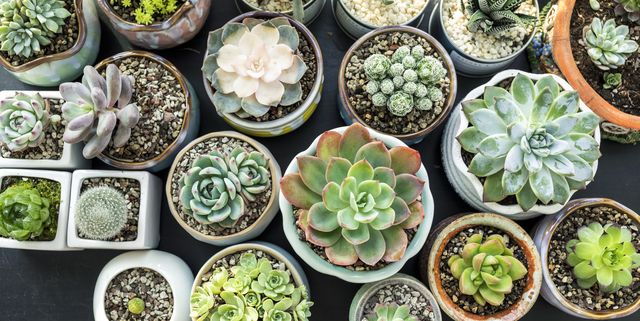
The most popular succulents that you should grow in your garden
Succulents are gaining in popularity since they are low-maintenance plants. Many plants can be grown by everyone, including beginners. If you don’t water them for a time, don’t worry; they’ll still make it. Their particular water-storing cells let them thrive in situations too dry for most other plants.
It is recommended that every gardener should grow at least some succulents. Succulents exist in an enormous variety of shapes, sizes, and colors, but succulents with blue flowers are the most likely to make a statement. Succulents in various hues are a vibrant and eye-catching addition to any garden. Whatever your aesthetic preferences maybe, adding some blue succulents and cacti to your home or office decor is a great way to bring the beauty of nature within.
Blue sky Echeveria:
Despite its attractiveness and rapid growth, this succulent’s giant rosettes will remain smaller if left to cluster with its offset. It features powdered blue leaves with reddish-pink edges during the fall and winter. “Farina,” a blue powder that forms on this echeveria, gives it a sky-blue hue similar to its name.
Aloe’ Blue Elf’:
As long as Blue Elf isn’t left in stagnant water, this succulent is a breeze to maintain. It’s essential that the soil be well-draining and watered sparingly. Aloe is an excellent plant for novice gardeners since it is so tolerant.
The thick, prickly leaves can grow as long as 18 inches. Plants usually bloom between early winter and spring, but they can bloom at any time of year if conditions are perfect. Its blossoms are an eye-catching shade of orange.
Queen Victoria agave:
A mature example of the little Queen Victoria agave can sell for as much as a thousand dollars, depending on its condition. Although it blooms only once during its lifetime (so you’ll almost certainly never see a bloom), it is similar to all other members of the Agave genus. This is an excellent single example because of its slow growth and fantastic beauty. Its leaves are edged in white lines, which give the plant a distinct graphic quality. A mature plant is roughly the size of a volley ball and is rock hard, while its leaves are lined in white lines, which give it a distinctive graphic appearance.
Zebra Plant:
The Zebra plant, also known as Haworthia, is a succulent that is always a good choice for adding to your succulent collection. The plant’s spiky appearance will add nothing but beauty to your indoor garden, and it will last for years. You may plant it everywhere because it has no thorns to scare you away. This makes it a good choice for households with children and pets.
Echeveria’ Blue Prince’:
Blue Prince is a beautiful blue succulent grown indoors or out. Blue Prince is equally at home in a pot on a sunny windowsill as it is in a hot, dry garden, and it puts on an impressive summer display of stemmed yellow flowers. It grows in clusters, has rosette-shaped blue-green leaves early in the season, and turns bronze in the fall. It is a perennial. It prefers drier soil and plenty of light, just like most succulents. It produces rich crimson flowers while it is in bloom.
Mangave’ Tooth Fairy’:
Because of the prominent spines along the leaf margins, this unusual hybrid succulent has been given the moniker “Tooth Fairy.” The plant’s yellowish-orange to brownish ‘tooth’ contrasts with its greenish-blue foliage. A mature Mangave can reach 12 inches and has a diameter of 10 inches.